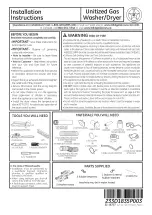
– Follow the instructions in the
chapter "Care and cleaning".
10.2 Using salt, rinse aid and
detergent
• Only use salt, rinse aid and detergent
for dishwasher. Other products can
cause damage to the appliance.
• In areas with hard and very hard
water we recommend to use plain
dishwasher detergent (powder, gel,
tablets containing no additional
agents), rinse aid and salt separately
for optimal cleaning and drying
results.
• At least once a month run the
appliance with the use of appliance
cleaner which is particularly suitable
for this purpose.
• Detergent tablets do not fully dissolve
with short programmes. To prevent
detergent residues on the tableware,
we recommend that you use the
tablets with long programmes.
• Do not use more than the correct
quantity of detergent. Refer to the
instructions on the detergent
packaging.
• Always use the correct quantity of
detergent. Insufficient dosage of
detergent can result in poor cleaning
results and hard-water filming or
spotting on the items. Using too much
detergent with soft or softened water
results in detergent residues on the
dishes. Adjust the amount of
detergent based on the water
hardness. Refer to the instructions on
the detergent packaging.
• Always use the correct quantity of
rinse aid. Insufficient dosage of rinse
aid decreases the drying results.
Using too much rinse aid results in
bluish layers on the items.
• Make sure that the water softener
level is correct. If the level is too high,
the increased quantity of salt in the
water might result in rust on cutlery.
10.3 What to do if you want to
stop using multi-tablets
Before you start to use separately
detergent, salt and rinse aid, complete
the following steps:
1. Set the highest level of the water
softener.
2. Make sure that the salt and rinse aid
containers are full.
3. Start the shortest programme with a
rinsing phase. Do not add detergent
and do put dishes in the baskets.
4. When the programme is complete,
adjust the water softener according
to the water hardness in your area.
5. Adjust the released quantity of rinse
aid.
6. Activate the rinse aid empty
notification.
10.4 Loading the baskets
• Always use the whole space of the
baskets.
• Use the appliance to wash
dishwasher-safe items only.
• Do not wash the following materials in
the dishwasher: wood, horn, pewter,
copper, aluminium, delicate
ornamented porcelain and
unprotected carbon steel. This can
cause them to crack, warp, discolour,
pit or rust.
• Do not wash in the appliance items
that can absorb water (sponges,
household cloths).
• Put hollow items (cups, glasses and
pans) with the opening facing
downwards.
• Make sure that glasses do not touch
each other.
• Put light or plastic items in the upper
basket. Make sure that the items do
not move freely.
• Put cutlery and small items in the
cutlery drawer.
• Make sure that the spray arms can
move freely before you start a
programme.
10.5 Before starting a
programme
Before you start the selected
programme, make sure that:
• The filters are clean and correctly
installed.
• The cap of the salt container is tight.
• The spray arms are not clogged.
• There is enough salt and rinse aid
(unless you use multi-tablets).
www.aeg.com
18
















































